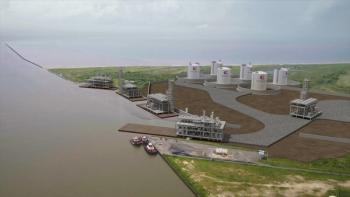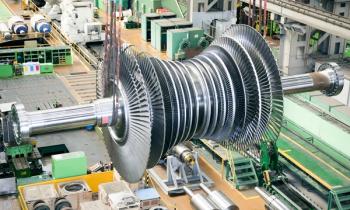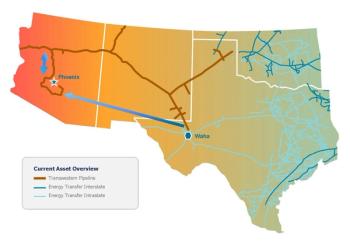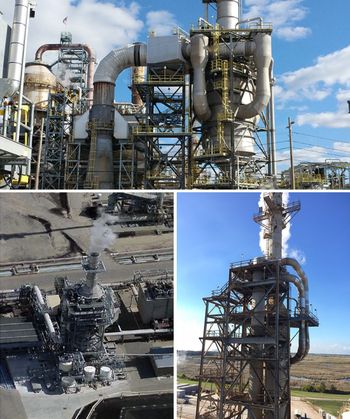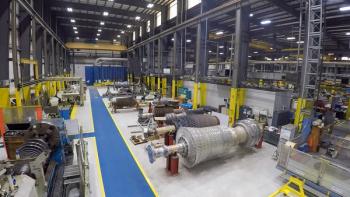
- May/June 2025
- Volume 66
- Issue 3
WTUI 2025 Supports Gas Turbines Users as Maintenance Intervals, Power Demand Increase
Supply and faster maintenance intervals are impacting the aeroderivative gas turbine market as OEMs try to keep up with demand.
The 34th annual Western Turbine Users Inc. (WTUI), held March 30 – April 2, 2025, in sunny Long Beach, California, welcomed a record number of attendees: more than 1,100. Just over 600 were exhibitors, including 146 companies exhibiting in the exhibit hall.
Attendees had access to authorized service providers for LM turbines, including IHI Power Services Corp., TransCanada Turbines, and MTU Aero Engines, as well as other independent service providers, to help solve turbine and plant issues. Breakout sessions for GE LM2500, LM5000, LM6000, and LMS100 allowed users to present their operational challenges and have fellow LM users offer solutions and troubleshooting techniques.
“WTUI’s forums are very active and getting more so,” said Ed Jackson, President of WTUI and Exira Station Manager at Missouri River Energy Services in Brayton, Iowa. “With the challenging environment of acquiring timely parts and service lately, compounded by reaching maintenance intervals faster due to increased operation, it is more important than ever for users to lean on and support each other. I believe that is becoming apparent in the active user forums and increased communication between users.”
Monamee Adhikari, Global Marketing Leader for Aeroderivatives at GE Vernova, said the top challenges for users at WTUI were “around supply-chain constraints related to parts and turnaround times from our depots. There is a global supply-chain constraint; however, we are doing our best to overcome this and be transparent with our customers. Our main focus is SQDC: safety, quality, delivery, and cost.”
GE Vernova’s focus is on SQDC and its L5, L4, and L2 service shops to ensure they get units back to customers in a timely manner and communicate accordingly to set expectations.
GAS TURBINE SUPPLY CHAIN
Monday morning, Mark Axford, Founder of Axford Turbine Consultants, and Tony Brough, President of Dora Partners & Co., presented the
The demand from AI data centers has caused unit sales to surge. “Reported gas turbine orders were up 32% in 2024, with GE Vernova as the market share leader,” Axford said. 2024 marked the highest unit number and MWs (near 500 units and almost 60 MW) reported since 2002.
In addition, Axford estimated an additional 30,000 MW of unreported orders, known as reservation agreements, bringing the total order book for 2024 to a level exceeding 80,000 MW.
U.S. utilities and developers “are racing to install baseload gas turbine combined-cycle power, but they can’t get it fast enough,” Axford said. GE Vernova, Siemens Energy, and Mitsubishi are now scheduled to deliver their large gas turbines in 2028 - 2029. In fact, he said that large gas turbine supply is essentially sold out for the next three to four years.
“Increasing power demand due to data centers and AI is definitely on everyone’s minds,” Adhikari said. “Almost all OEMs are supply-challenged from a gas-turbine perspective, and GE Vernova aims to reduce lead times in conjunction with GE Aerospace. With decarbonization being less of a focus for the new Administration, GE Vernova will still do what’s right environmentally. We are focusing on both pre- and post-combustion carbon reduction and are ready with solutions for our customers whenever they are ready.”
Jackson said energy providers are scrambling to add generation to meet the need. “Not only is the lead time for major equipment increasing, but even the time it takes to build plants could take years to permit and build,” he said. “This puts a lot of pressure on the existing generation, as many peaking plants that were originally designed to run at capacity factors of 10% or less are now running 30%, 40%, 50%, or more. We are pushing those plants harder and hitting the major maintenance intervals faster, which is putting even more pressure on an already burdened supply chain. Operators have to revise how they used to plan and budget and work with suppliers to ensure the availability of parts and labor. Running these plants is getting more challenging, making it even more important for users to attend conferences and forums like WTUI to ‘compare notes.’”
President Donald Trump’s election has ushered in profound changes to the U.S. energy policy. Axford said the President’s goal is “energy dominance” with less government intervention—“Drill baby Drill” is the new Administration’s anthem driving energy forward. The United States exited the Paris Agreement, and it’s uncertain whether EPA regulations on CO2 will be altered. Green subsidies and EV mandates are out. Instead, the new U.S. Secretary of Energy, Chris Wright, showed strong support at CERAWeek 2025 for pipelines, drilling, fracking, LNG, and gas turbines.
It’s uncertain how the Administration’s tariffs will impact the supply chain. “Generally speaking, with the tariffs today, it’s early to kind of understand what the full financial implications are for [GE Vernova],” Adhikari said. "It’s not nothing, but it’s something that we’ll manage our way through, and I think it’s something we’re going to have to get smarter on every day, on how we manage through the volatility that we’re going to have with the topic of tariffs. Our team’s working on it every day, and I’m confident we’ll navigate our way through it.”
POWER-HUNGRY DATA CENTERS
As gas turbine orders surge, the energy transition is being reworked into energy addition. The energy trilemma—reliable, affordable, sustainable—in which each side of the triangle was equal, is shifting its priorities to affordability holding the lion’s share, reliability as the second runner-up, and a small focus on sustainability, according to Axford.
There is no path to net zero by 2050. “It would cost 5% of the world’s GDP for the next 25 years, and we are further away now than we were in 2022,” Daniel Yergin, Vice Charman of S&P Global, said at CERAWeek by S&P Global 2025.
The practical approach is affordable LNG for heating and cooking. In 2024, the United States was the no. 1 LNG exporter. The U.S. Energy Information Administration projects U.S. LNG exports will increase by 80% by December 2028.
Cheniere is the largest U.S. exporter of LNG, and it is “ramping up its exports,” according to Axford. In 2026, exports are slated to reach 55 million metric tons, up 22% compared to 2024. What’s powering Cheniere’s exports? GE’s LM2500 gas turbines.
GAS TURBINES GONE WILD
Gas turbines [have] gone wild, as Axford put it. New orders are now shipping in 2027, 2028, and 2029, with gas turbine and engineering, procurement, and construction prices up sharply. According to Dora Partners & Co., global gas turbine MW orders were upwards of 40,000 in 2023 and around 60,000 MW in 2024, with reservations for more than 80,000 MW.
“We completed a modern combined cycle in 2022 for $785 per KW,” said John W. Ketchum, CEO of NextEra. “A new build for 2030 commercial operation will cost $2,400 per KW.”
GE Vernova saw solid numbers in 2024. It regained the no. 1 market share spot of advanced-frame gas turbines—Mitsubishi was no. 1 in 2022 – 2023—and has approximately 85% market share for aeroderivative gas turbines. The company booked 22 GW of gas turbine “orders” in 2024. It is expanding its Greenville, South Carolina, gas turbine factory capacity from 55 heavy-frame gas turbines per year (now) to 70 – 80 per year in 2026.
Overall, advanced-frame (> 225 MW) gas turbine orders were approximately 80% of all gas turbine orders (MWe). The top OEMs and their gas turbine models include:
- GE Vernova: 7F.05, 7H, 9F, and 9H
- Mitsubishi: F, G, and J series
- Siemens Energy: F and H series
- Ansaldo Energia: 94.3A
- Doosan: DJT 6 (~ 2.5%)
Axford said 2024 was a strong year for LM6000 and LM2500+G4 and predicts 2025 gas turbine “orders” will increase by 7 – 10%.
"WTUI’s forums are very active and getting more so. With the challenging environment of acquiring timely parts and service lately, compounded by reaching maintenance intervals faster due to increased operation, it is more important than ever for users to lean on and support each other.” - Ed Jackson, President of WTUI
TECHNICAL SESSIONS
HRSG
During the technical sessions, Jack Odlum, the Northwest Regional Manager at HRST Inc., outlined how operating and design modifications improve a
Odlum said it’s surprising how even small changes impact HRSG efficiency: “Things like baffle gaps or tube fouling might seem like no big deal, but as they add up, it can mean lost MWs of production in larger HRSGs. Not every efficiency-boosting modification needs to be something like adding an economizer surface or installing an upgraded duct burner. Sometimes, it’s as simple as keeping the HRSG in close to as-built conditions as possible. When it comes to operational efficiency, it’s more directed at running the plant well in an evolving power market, ensuring you can get online fast enough with as little damage to the boiler as possible.”
Odlum said he’s seeing two trends: cycling in HRSG operation and design and challenges with the size of newer turbines, like the H-class machines.
Flow Modeling
Engineering Manager Matt Gentry of Airflow Sciences Corp. presented on
“Flow modeling is an important component of the engineering toolbox,” Gentry said. “Both computational fluid dynamics and physical-scale modeling can provide detailed predictions of flow, pressure, ammonia, and temperature distributions throughout a gas turbine power plant. These predictions allow for performance optimization without the need for a time-consuming and expensive trial-and-error approach to solving problems in the field.”
Gentry said many flow-related parameters are inter-related:
- Ammonia non-uniformity can cause pressure loss and heat-rate issues
- Poor velocity distribution can result in skewed heat transfer at tube banks
- Tube bank, catalyst, and ammonia injection grid seals/baffles may seem simple, but if they are not maintained, they can have a significant negative impact
WTUI 2026 will be back in Long Beach, California, from Tuesday, April 7 to Friday, April 10, 2026.
Articles in this issue
7 months ago
Myth: We Need That Last Percent8 months ago
Turbomachinery International: May/June 2025Newsletter
Power your knowledge with the latest in turbine technology, engineering advances, and energy solutions—subscribe to Turbomachinery International today.

